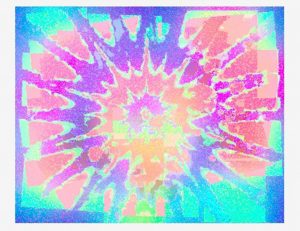This language activity post is packed with ideas for teaching vocabulary while having fun.
“Hooray For Fish” is a fun book written by Lucy Cousins. You can use it to teach your child many concepts through play-based activities. If you don’t have the book, I highly recommend using the animated, online version. Kids enjoy it and you can pause the video when you want to talk about the page you are watching.
What vocabulary can you target? So many words to learn! Here are just a few examples.
Basic Concepts:
- Little/Big
- Top/Bottom
- Same/Different
Greetings:
- Hello
- Bye
Describing Words:
- Colors (i.e. red, blue, yellow)
- Spots
- Stripes
- Swirls
- Spiky
Emotions:
- Happy
- Sad
- Grumpy
- Shy
Numerical/Quantity Concepts
- Counting (i.e. 1,2,3)
- A lot
- A few
Labeling:
- Fish
- Water
- Bubbles
- Eyes
- Fin
- Tail
- Body
Book Only Language Activities
- Model words and phrases for your child using the vocabulary mentioned above (i.e. little fish, big fish swimming). “Modeling” refers to the act of saying things the way you want your child to repeat them.
- Point to a fish and try to get your child to label what he/she sees by pointing to a fish and saying things like “look at this one, it’s….BIG” or “this is one is….LITTLE”(wait expectantly to see if your child will fill in the blank with a word like blue, big, little, etc.). If your child does not, it is ok. Just fill in the blank for your child. Keep practicing. Repetition is important and better than asking your child “what’s that?”
- Stand up and pretend to swim while you practice phrases like “I’m swimming” or “swim fast.” Act out what swimming FAST and swimming SLOW looks and feels like. Movement helps children learn. Pretend to be a scary fish, a grumpy fish or a shy fish.
- Play I Spy while looking at the pages in the book. For example, say I spy a yellow fish, do you? If your child does not point to a yellow fish, guide his/her hand towards the yellow fish and say, “There it is! We found it!” Make it fun and be excited.
Hands-On Language Activity
What you need:
- Container or bucket large enough to fill with water and add small fish
- Bubble bath/soap (optional)
- Sand (optional)
- Various sea animals (fish, octopus, shark, dolphin, crab). I like to use 5-10 animals that vary in size and I usually include two animals that look the same
- Small bug net, scooper or tongs to “fish” the animals
Instructions:
- Fill a container with water.
- Before adding water, talk about the container being “dry” inside and have your child touch it. Once you put a little water in the container, teach the concept “wet” and have your child touch the water. You can practice phrases like dry hands and wet hands.
- You can also talk about the container and if it feels light or heavy. Remember, if you are working with a toddler, keep it simple and comment using short phrases (i.e. heavy bucket, hands are wet, water inside).
- Keep the sea animals out of your child’s reach to promote communication (i.e. asking for fish).
What to do? Play, Play, Play:
- Take one sea animal at a time and place it near your mouth, label it and give it to your child. Have your child place the animal in the water. Repeat this with all the animals.
- You can work on having your child ask for “more” prior to giving an additional fish.
- You can also practice using phrases like fish swimming, water splashing, dolphin inside and more fish.
- Add sand to the container and hide the fish in the sand (optional). Comment, “The fish is hiding.”
- Add bubbles to the container and pretend to give the fish a bath (optional). Make comments about the bubbles (i.e. bubble bath, fish are popping bubbles, pop-pop-pop).
- If the fish are different sizes or colors, talk about the differences you see (i.e. same fish, two blue, different fish, one big, one little).
- Use the net, scooper or tongs to “catch” fish. You can take turns telling each other what fish to catch. Also, you can close your eyes and then try to “catch” a fish. Before opening your eyes, try to guess what fish you caught by feeling it with your hands.
Coloring Language Activity:
Draw some small and some large fish on a piece of paper. While painting or coloring with your child, talk about what you are doing (i.e. I’m painting the BIG fish YELLOW). Exaggerate the words you want your child to learn. You can draw spots, swirls and stripes on the fish to practice the vocabulary introduced while reading the book.
Looking for another language activity? Check out Activities for Learning Vocabulary here.
Photo Credit: Photo on Visual hunt
Have FUN and let me know how it goes in the comments below.




